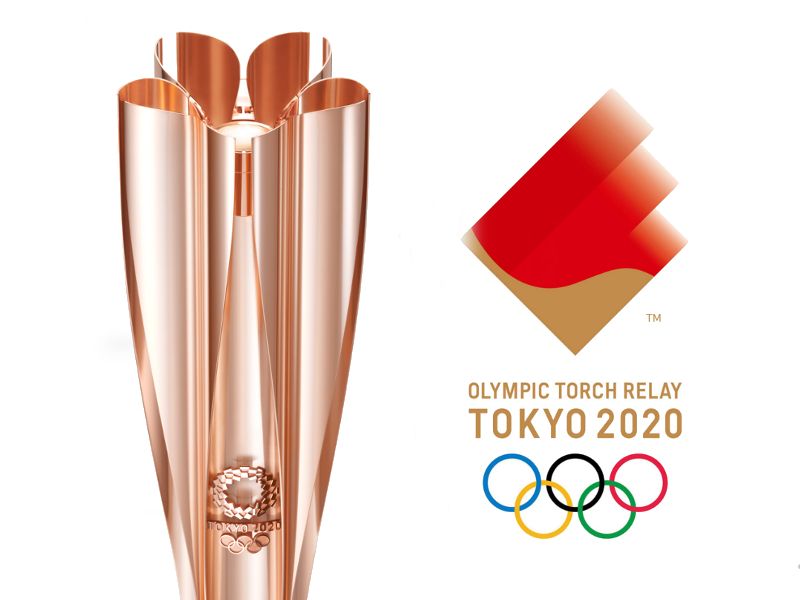The Olympic flame is an international symbol of peace and hope. It embodies the spirit of the Olympics and in the buildup to the Tokyo 2020 Summer Olympics, thousands of people will take part in the Olympic Torch Relay, helping inspire millions of people around the world.
Although the Tokyo 2020 Olympics have been delayed until 2021 due to coronavirus, the Torch Relay will still take place on roughly the same dates as scheduled for 2020, just one year later.
The Tokyo Olympic Torch Relay will not only symbolize hope, but it will also spread the joy and passion of the games throughout Japan. The flame will initially be put on display at various locations in the Tohoku region, to deliver a message of hope, unity, and support to the areas affected by the 2011 earthquake and tsunami.
The Tokyo Olympics have finally begun! Get all the information on our complete guide including schedules, event details, dates, Tokyo Stadium, other venues and more.
Schedule of the Tokyo Olympic Torch Relay
With the motto “Hope Lights Our Way,” the torch will travel to Fukushima, Iwate and Miyagi, the prefectures most affected by the 2011 earthquake and tsunami, in which more than 18,000 people died or went missing.
Hundreds of sports fans will then take their turn to carry the torch for a small part of the journey. The table below shows the dates and locations of the torch’s route which covers every corner of Japan.
| Prefecture | 2021 Dates |
| Fukushima | 25-27 March |
| Tochigi | 28-29 March |
| Gunma | 30 -31 March |
| Nagano | 1-2 April |
| Gifu | 3-4 April |
| Aichi | 5-6 April |
| Mie | 7-8 April |
| Wakayama | 9-10 April |
| Nara | 11-12 April |
| Osaka | 13-14 April |
| Tokushima | 15-16 April |
| Kagawa | 17-18 April |
| Kochi | 19-20 April |
| Ehime | 21-22 April |
| Oita | 23-24 April |
| Miyazaki | 25-26 April |
| Kagoshima | 27-28 April |
| Okinawa | 1-2 May |
| Kumamoto | 5-6 May |
| Nagasaki | 7-8 May |
| Saga | 9-10 May |
| Fukuoka | 11-12 May |
| Yamaguchi | 13-14 May |
| Shimane | 15-16 May |
| Hiroshima | 17-18 May |
| Okayama | 19-20 May |
| Tottori | 21-22 May |
| Hyogo | 23-24 May |
| Kyoto | 25-26 May |
| Shiga | 27-28 May |
| Fukui | 29-30 May |
| Ishikawa | 31 May – 1 June |
| Toyama | 2-3 June |
| Niigata | 4-5 June |
| Yamagata | 6-7 June |
| Akita | 8-9 June |
| Aomori | 10-11 June |
| Hokkaido | 13-14 June |
| Iwate | 16-18 June |
| Miyagi | 19-21 June |
| Shizuoka | 23-25 June |
| Yamanashi | 26-27 June |
| Kanagawa | 28-30 June |
| Chiba | 1-3 July |
| Ibaraki | 4-5 July |
| Saitama | 6-8 July |
| Tokyo | 9-23 July |
[banner-en]
Coronavirus countermeasures
The Tokyo Olympics organizing committee has announced the following COVID-19 countermeasures to safeguard spectators during the torch relay:
- Fans are encouraged to watch the live broadcast of the relay on television to avoid crowding on roadsides along the route. Plans to suspend the relay if too many people gather are in place
- If they do attend in person, spectators are asked to applaud instead of shouting encouragement and to wear masks at all times
- Advance booking for ceremony venues has been implemented to avoid overcrowding
Additionally, operations staff working along the torch relay route will be regularly tested for COVID-19, while torchbearers have been asked to follow a strict health checklist in the 2 weeks leading up to the relay.
The Tokyo 2020 Olympic Torch
The design of the Tokyo 2020 Olympic torch will include a cherry blossom (or sakura) emblem to represent the iconic national flower. To coincide with the cherry blossom season.
The cherry blossom motif has been created using the same manufacturing techniques used for the production of Shinkansen bullet trains. Aluminium extrusion has been used to make seamless pieces from a single metal sheet. The torch emblem will represent the harmony between Japanese traditions and advanced technological capabilities.
History of the Olympic Torch Relay
The first ever modern Olympics were held in 1896 but the Olympic flame didn’t feature until the 1928 Amsterdam games when a cauldron was lit to represent the spirit of the games. However, the modern Torch Relay didn’t feature until the 1936 Olympic Games in Berlin.
Ancient Greek drawings and writing inspired Dr. Carl Diem to conceive the idea of the relay. On July 20, 1936, Konstantin Kondylis of Greece became the first ever runner in the event’s history and the idea caught the imagination of sports fans around the world. It has been an iconic, global symbol ever since.
The Torch Relay doesn’t involve passing a singular torch from one person to the next. Instead, the sacred flame is passed from torch to torch. The passing of the flame symbolizes handing the spirit and wisdom of the games to the next generation.
Interesting facts about the Olympic Torch Relay
- The final torch carrier is kept secret until the final moments of the relay.
- There is a new torch design for every Olympics.
- The torch features a dual burner system making it resistant to wind and rain.
- 2004 was the first time the torch passed through every continent.
- The Beijing Torch Relay was the longest ever, covering 137,00 km.
- The relay ends on the day of the Opening Ceremony.
